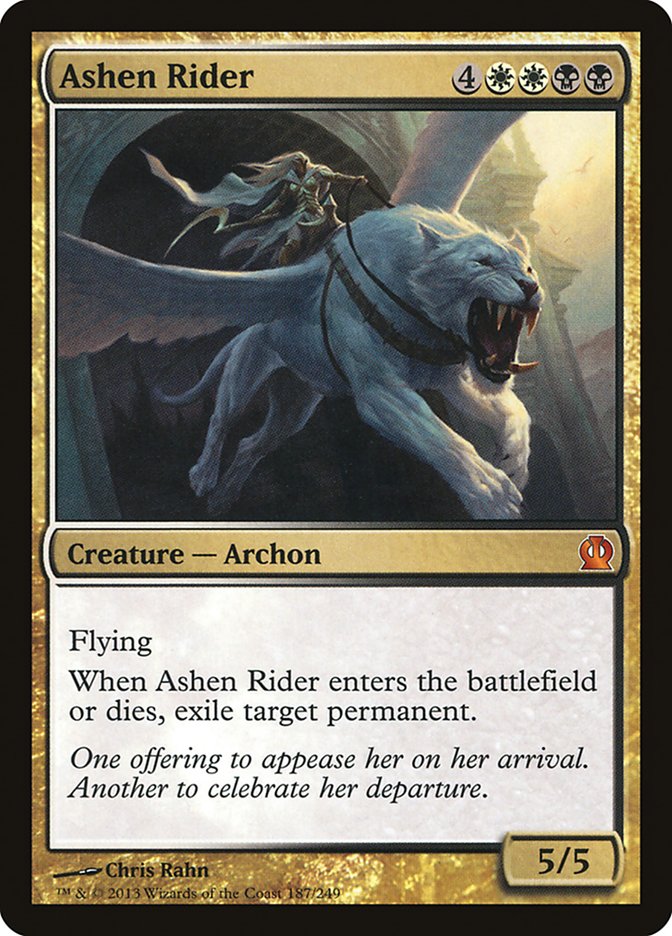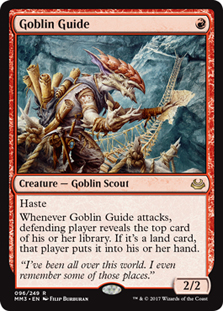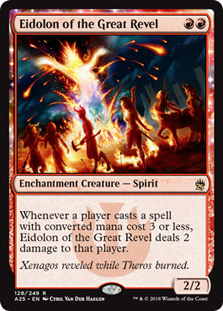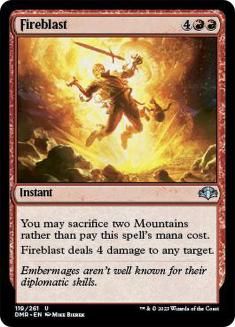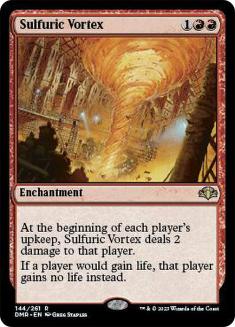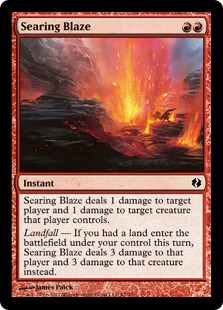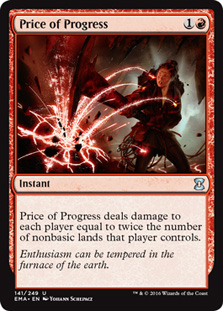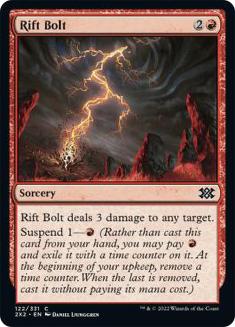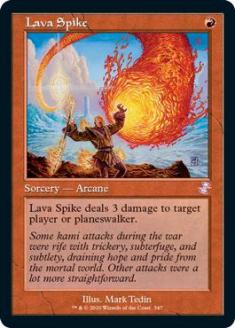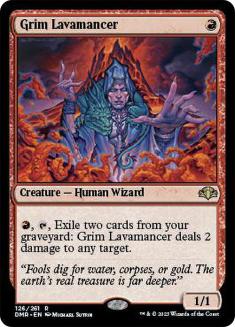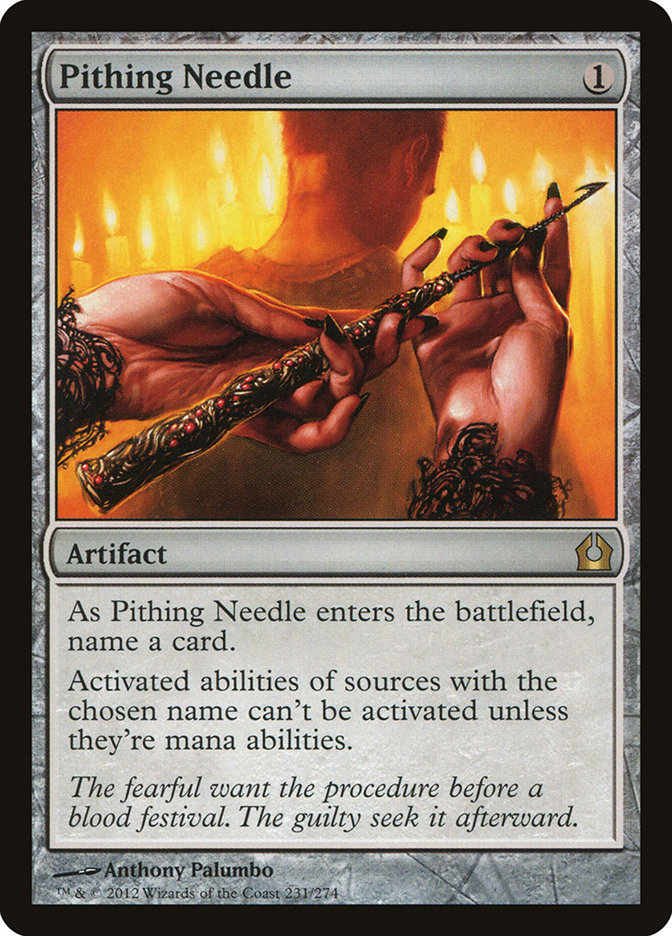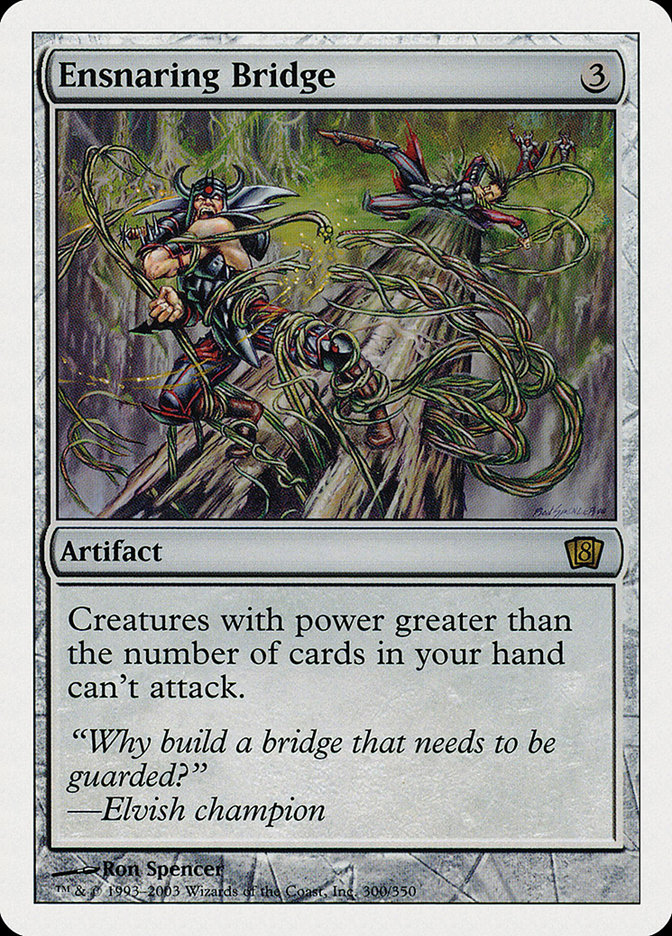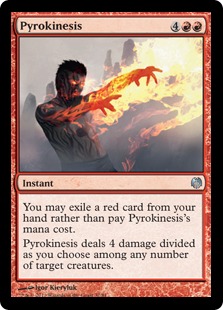Last week
we talked about my 9th place finish at the Open Series in Worcester with Burn and took a look at how the deck was built. This week we are going to look at
some of the matches that I played, how your matchups will play out, some tips for playing the deck, other possible sideboard options, and other avenues to
take the deck.
SCG Worcester
While I do think Burn has quite a few good matchups in the format, I really didn’t play against many of them at all in Worcester. Conversely, I actually
ended up playing against most of the deck’s bad matchups save for any Show and Tell-based decks.
Round one saw me win a pseudo-mirror against a Burn deck that was splashing blue for Treasure Cruise. While this addition may improve the deck in general,
it certainly is very poor in the mirror as it is slightly slower and turns on Price of Progress– a card that is almost always blank in the mirror.
After a pretty standard match against Temur Delver where I was victorious, I was paired against perhaps one of the decks worst possible matchups in U/B
Reanimator. My opponent took a few mulligans in game 1, and I was able to steal it on the play, but game 2 I would make a critical error that lost me a
game I might have won even through an Iona, Shield of Emeria.
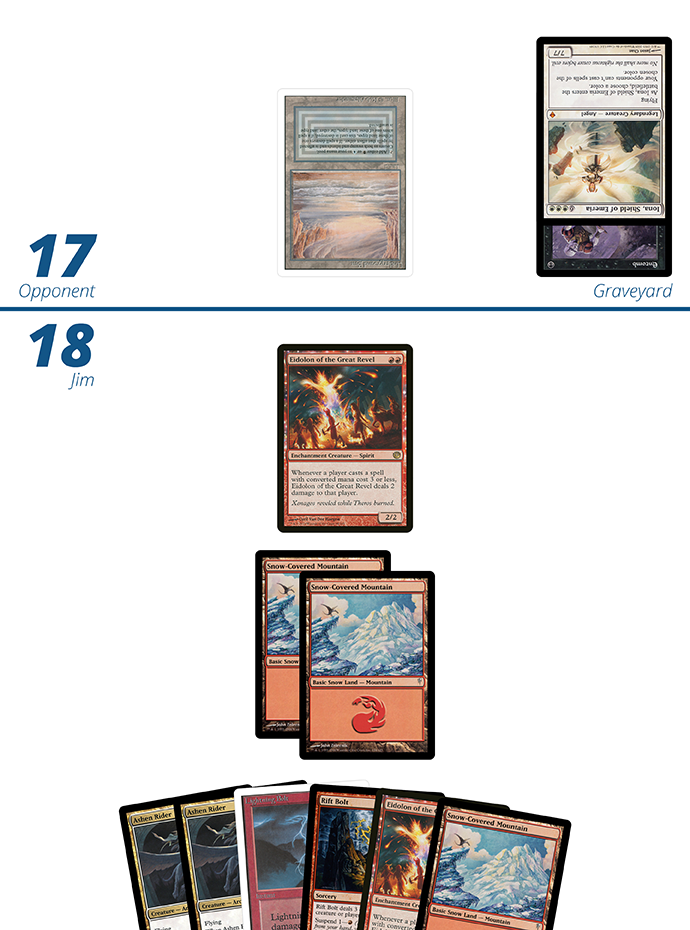
We were on the draw for game 2, and after a scary end step Entomb for Iona, Shield of Emeria our opponent has bricked on his second land drop for a fairly
obvious turn 2 Exhume. This is pretty fortunate for us, as it gives us a chance in the game. Unfortunately, this is where I make a critical error. After
attacking for two, I played a second Eidolon of the Great Revel and then had the option of either suspending Rift Bolt or just leaving open Lightning Bolt
mana. Partly because I was just making the autopilot play of leading with the slower burn spell and partly because I was playing around Daze (which I saw
game 1), I decided to suspend the Rift Bolt.
My opponent promptly drew his second land, cast Exhume, took four damage from my Eidolons (down to eleven life), and brought back Iona, Shield of Emeria on
red. He was simply able to attack for the next three turns and win the race on three life as he killed me.
If I had just left open Lightning Bolt mana instead, I would have been able to put him to eight life after my Eidolon triggers had resolved but before the
Exhume resolved, which would have left him unable to race me and would have left us at a standstill, a standstill that left me at a distinct advantage,
because he was completely unaware of the Ashen Rider waiting in my hand.
At only eight life and with two Eidolons in play, my opponent would only be able to cast one spell before he died. While it is possible that he may choose
to sit there, discard to hand size, and then cast another Exhume (not Reanimate, which would kill him) for a Griselbrand, the much simpler play would just
be to cast a Show and Tell and put it directly into play. This of course would allow me to kill Iona with Ashen Rider and likely win the game on the spot.
Even if my opponent does choose to play around the Ashen Rider he does not know about, I am still drawing live to my three copies of Relic of Progenitus
which would also force him to use Show and Tell as well.
While it is possible my opponent could have played it super safe and played around Ashen Rider, I think there is a very good chance he would not, and I
could have stolen a win from a really bad matchup. One of the important things about playing decks like Burn or Goblins that are very good against most
decks, but very weak to others, is being able to steal wins in your bad matchups.
Speaking of bad matchups, I was able to sneak past a Miracles deck the following round, when in round five I was paired against another almost unwinnable
deck: Enchantress. While not really a reasonable deck in Legacy, Solitary Confinement is pretty much unbeatable for red decks that can’t interact with it.
I was extremely fortunate this round as my opponent accidently drew an extra card in game 1 and was penalized with a game loss, and I was able to steal
game 3 on the play with a fast draw.
Round five saw me paired with Miracles again, this time on camera, and after an extremely long and tedious match we would both walk away with a draw.
Games 2 and 3 I was not able to put him away before Counterbalance + Sensei’s Divining Top was able to get online, and at that point the game always
devolves into a glacial pace where the Counterbalance player has to be extremely vigilant at all times to never leave himself open to dying, and I have to
try and find the tiny cracks that he might leave me to sneak through- or just draw a Fireblast before he draws a counterspell, that works too.
Escaping with a draw left me at 4-1-1 and still live for top 8, and round seven saw me take down a U/R Delver deck in fairly convincing fashion. While both
games were close, careful management of taking just the right amount of damage from his creatures allowed me to take it down.
When my round 8 opponent opened up with Swamp, Lotus Petal, Ponder, I saw my tournament life flash before my eyes. Beating a Reanimator deck on the play
for two games was going to be extremely difficult, but lucky for me, he was playing Storm. While not a good matchup by any means, it was a matchup I at
least had tools to interact with.
Eidolon of the Great Revel really has done wonderful things for the deck and has made once awful matchups like Storm very tolerable.
Matchups
Miracles
Let’s start with one of the popular and difficult matchups for Burn: Miracles.
Strong cards:
Weak cards:
Miracles is a tough matchup because they do such a good job of blanking many of our cards. Because they have so few creatures and so many basic lands, both
Searing Blaze and Price of Progress are not going to be nearly as effective as usual. Once they establish the Counterbalance lock, pretty much all of your
one mana spells are blank as well, so it is very important to unload them as soon as you possibly can.
Your recurring damage sources like Goblin Guide and Eidolon of the Great Revel are extremely important in this matchup, as they are in most, as even if
they get hit with a Swords to Plowshares they should be able to do some damage first. Sulfuric Vortex is your best card against them bar none, and
Fireblast is the card you want to draw most in the lategame as they only have a few six mana spells in their deck to Counterbalance it.
Various Delver of Secrets decks
I am going to lump all the Delver decks together to save time, but on the whole these are very good matchups for you.
Strong cards:
Weak Cards:
Delver decks almost always play exclusively non-basic lands, making Price of Progress deal an absurd amount of damage, but be aware that their useless
Wastelands can be used on their own lands to lesson the damage of the spell. While for the most part you always want to be pointing burn at your opponent’s
face, you occasionally are going to need to decide if Lightning Bolting an Insectile Aberration is going to help you survive long enough to play the
remainder of your burn spells. This is, of course, where Searing Blaze shines, as it allows you to burn them while also killing a creature and buying
yourself time.
The other major factor in playing out these Delver matchups is playing around their various soft counterspells like Spell Pierce, Daze, and so on. This
takes time and practice, but timing really is everything. Your instant speed burn spells can be played at various points during end steps and upkeeps and
in response to fetchlands being cracked where they will have their shields down; it is very important to find these spots. Also remember to float two mana
if you are going to sacrifice two untapped Mountains to Fireblast!
Various Stoneforge Mystic decks
Of course, there is some overlap between the Delver of Secrets decks and the Stoneforge Mystic decks, but for the most part here, we are referring to
Stoneblade and Deathblade decks.
Strong cards:
Weak Cards:
While you once again have a very good matchup against various Stoneforge Mystic decks, they do have one major thing that the Delver decks lack: lifegain.
It is imperative to keep them from gaining life off of Batterskull or Umezawa’s Jitte at all costs, and this can mean going to great lengths like Lightning
Bolting your own creatures or sacrificing your only two Mountains to Fireblast if necessary.
Again these decks play a ton of non-basic lands and some weak, important creatures making Price of Progress and Searing Blaze all stars again, and once
again you will need to be playing around their soft counters. They usually won’t have Daze but might have Spell Pierces.
Smash to Smithereens out of the sideboard is absolutely vital, and Sulfuric Vortex is your best possible card against them.
Show and Tell / Reanimator
The Show and Tell and Reanimator matchups are not good ones.
Strong cards:
Weak cards:
Because they can kill you quickly, their combo is not really affected by Eidolon of the Great Revel, and they can gain life with Griselbrand; these are
difficult matchups.
It is absolutely imperative you mulligan to a fast hand, hopefully with some sideboard cards in the post sideboarded games. One major bonus is that they
very rarely can interact with a Goblin Guide or Eidolon of the Great Revel, which makes them of utmost importance.
Mulligan aggressively and hope that your fast clock with a bit of sideboarded disruption can steal a win.
Spell-Based Combo
While this is mostly Storm, it can also include some odd decks like High Tide and Belcher.
Strong cards:
Weak cards:
Most of the strategy as written against Show and Tell applies here, but these matchups are much better because you have top-flight sideboard card in your
maindeck in Eidolon of the Great Revel. A turn 2 Eidolon in game 1 will be quite difficult to beat, and having such a powerful card against them makes this
matchup tolerable.
Again, you need to mulligan very aggressively, and make sure you can have a fast start hopefully backed up with a bit of disruption. A little bit of luck
won’t hurt either, but don’t be too discouraged- as we saw from my round 8 in Worcester, this matchup is very winnable.
Lands
LOL Price of Progress.
One of the sweet things about Burn is that some of your cards like Eidolon of the Great Revel and Price of Progress are perfectly reasonable maindeck cards
that are absolutely brutal against some decks.
Strong cards:
Weak cards:
Your basic goal here is to draw a Price of Progress and win. This is an odd matchup, because against most fair decks, Lands plays like a very slow prison
deck with a combo finish at the end. Against us they won’t have that luxury as the only card we are really afraid of is Glacial Chasm.
Lands doesn’t interact with our burn spells very well, and while they have Punishing Fire for our creatures, that is pretty slow. They have to try for a
quick Dark Depths + Thespian Stage kill, and hope to god we don’t draw Price of Progress.
Shardless Sultai
A fantastic matchup, Shardless Sultai is sort of like a Miracles deck with almost all non-basic lands and no Counterbalance lock.
Strong cards:
Weak cards:
None.
As a slow and grindy control deck, Shardless Sultai really lacks the tools to interact with you on almost any level. You have plenty of time to light them
up with burn spells, attack with creatures that are more efficient than their removal spells, and take advantage of their bevy of non-basic lands.
Their only real hope of beating you is a quick double Tarmogoyf draw with a timely Force of Will, or somehow being able to stick a Deathrite Shaman. Relic
of Progenitus out of the board makes this matchup almost unlosable.
Elves
Elves is a tricky and somewhat confusing matchup. Some of our cards are very good against them, but many are not, and they can often present very broken
boardstates that are hard for us to deal with.
Strong cards:
Weak cards:
The Elves matchup is much different than almost all your other matchups, as you are going to be forced to point your burn at their creatures fairly often.
While you can race most decks by just pointing burn at their face, Elves can easily kill you on turn 3 if you try and go this route.
This means that your best card in the matchup by far is Grim Lavamancer, as they can’t really remove him, and he can take down an elf every single turn.
Searing Blaze also provides you with a way to gain value while killing a creature, and Eidolon can help deal damage to them while you deal with their elves
one by one.
If you can lead Grim Lavamancer into Eidolon, you are probably going to have an easy match, but otherwise this is a difficult matchup and will vary wildly
depending on the playskill of your opponent and who wins the die roll. Be sure to mulligan aggressively, as this is absolutely a match where specific cards
are far more important than volume.
Possible Sideboard Cards
My sideboard in Worcester was admittedly not perfect, so lets take a look at some cards that might make the cut.
This is the big one, as it would help out a ton against Miracles as a way to preemptively stop the Counterbalance lock. Just shutting down Sensei’s
Divining Top in general, even sans Counterbalance, really slows Miracles down. Miracles is not a good matchup, and this could easily be the right tool for
the job. Some people have played Vexing Shusher, but that card is just far too vulnerable to Swords to Plowshares and Terminus to be effective.
Pithing Needle could also have some minor applications in other matchups, such as turning off the Thespian Stages in Lands, but for the most part you are
only going to want a card that does not damage them and has diminishing returns in matchups where it is devastating.
This is a potential replacement for Ashen Rider as your answer to Show and Tell style matchups, but it also has applications in other matchups as well.
While clearly not nearly as effective off of a Show and Tell, it still gets the job done, and against creature decks that have trouble removing it
effectively, it can buy you the time you need to light em up.
Taking a page out of the Goblins book, Pyrokinesis is an amazing card for dealing with Elves. While Burn can’t recoup the card disadvantage like Goblins
can, it can still buy an amazing amount of time against the deck and be quite devastating. It is also possible you just want some Forked Bolt-style effects
or even Pyroclasm.
Burning on a Budget
Is Burn a budget deck? While it’s hard to say no, I don’t think anything about the construction of the deck is done because of actually monetary
restrictions- the optimal Burn deck just happens to be inexpensive. The fact that the deck has many good matchups in the field along with solid game in its
bad matchups makes it a great choice for newer or more experienced Legacy players alike.


